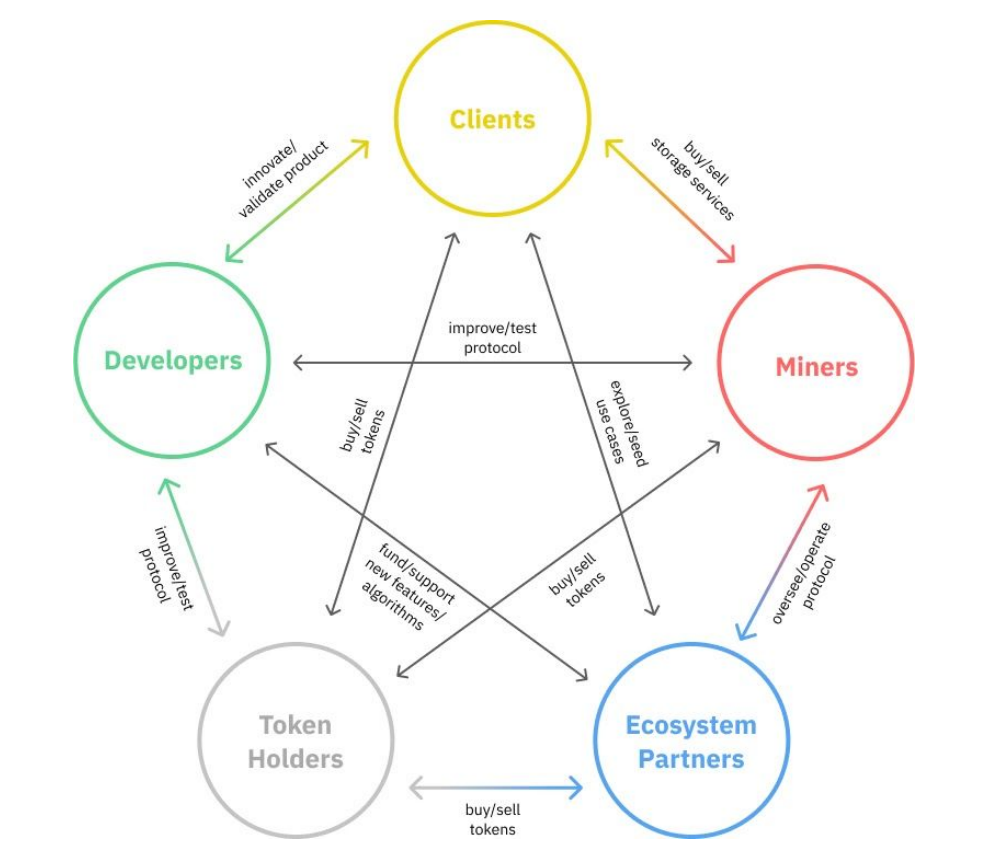Revolutionizing The Way Data is Stored With Filecoin
By Aidan Kalish | Crescent City Capital Market Analyst Intern

Filecoin is a peer-to-peer blockchain protocol focused on creating a decentralized storage network. Starting in 2014 but only appearing on the market in October 2020, Filecoin allows users to rent or buy storage spaces from another computer in which they would store their files. The Filecoin blockchain records transactions to provide verification of file storage and the transfer of FIL, the network’s native coin that gives holders a right to use the network.
The Filecoin concept promotes the trend of rising data center capacity that has grown in parallel with the implementation of high-speed 5G communication networks that enable the transfer of larger data files and as streaming, and content creation services continue to grow. Users can choose among miners to find one that offers the best balance of cost, speed, security, and reliability to meet their needs. Storage miners can be any individual or organization with spare disk space on an internet connected computer. In exchange for providing computer storage, miners receive FIL. To retrieve files users pay a fee to a retrieval miner who will get the files. This is because the data stored is encrypted and the storage miners don’t have tools for its decryption. The retrieval miners get the decryption tools to access the files and get them for the clients. The retrieval miner is then paid in FIL for retrieving the files. Filecoin reduces barriers to entry for miners removing the need for each individual provider to advertise their offering, resulting in a decentralized environment of independent workers. In theory, as Filecoin becomes more popular the miners will become more competitive which will drives down the price of storage. As of its most recent update on 9/28/22, Filecoin says that the network has 4,047 storage providers offering 18.6 EiB of total network storage power.

To ensure that the data storage, data retrieval and other functions of the network remain valid, Filecoin uses a validation system that serves as the core protocol for the network. This system includes two proofs:
- Proof of Replication: Mechanism that validates that storage miners stored an amount of data in its jurisdiction
- Proof of Spacetime: Mechanism that validates whether the miner stored the data at an agreed time length
These proofs allow Filecoin to uncover fraudulent storage miners. It has the storage history of every miner which gives them grading over time. It ranks their reliability, dependability, pricing and availability. These rankings help clients make informed decisions about who to store files with. Storage miners with a high ranking get more clients and earn more rewards than those with a low ranking.
At the time of writing FIL has a market cap of $1.64 billion and a fully diluted market cap of $1.64 billion making it the 36th largest coin. The current circulating supply of FIL is 293,839,270. At the start of 2022, FIL was trading at $34.83 and has since fallen to a current value of $5.58.
Filecoin has also been working on expanding its ecosystem by working with other developers in the cryptocurrency space. Filecoin reported that it was working with Polygon to accelerate Web3 interoperability between the two networks. This was done by creating a bridge between the two blockchains, offering free storage costs for any projects that use the bridge. JigstackDAO, a governance platform for decentralized finance (DeFi) products also said that it would use Filecoin to store non-fungible tokens (NFTs). With its facilitation of a open market for file storage with the ability to guarantee users secure storage without risk of censorship and denial-of-service attacks, Filecoin has already segmented itself as a unique name in digital storage and Web3 spaces. Given the increasing need for larger data center capacities with new data transfer methods being implemented, the potential use for Filecoin’s network increases as well. Given that FIL is currently only worth a fraction of what it was worth a year ago and its positive future potential, a long-term investment in FIL may be appealing as the utility of the coin is likely to only grow in the future.
Disclaimer: Please note that the contents of this article are not financial or investing advice. The information provided in this article is the author’s opinion only and should not be considered as offering trading or investing recommendations. Please conduct your own due diligence before making any investment decisions.
References:
https://coinmarketcap.com/currencies/filecoin/
https://api-new.whitepaper.io/documents/pdf?id=B1F5C0bYD

